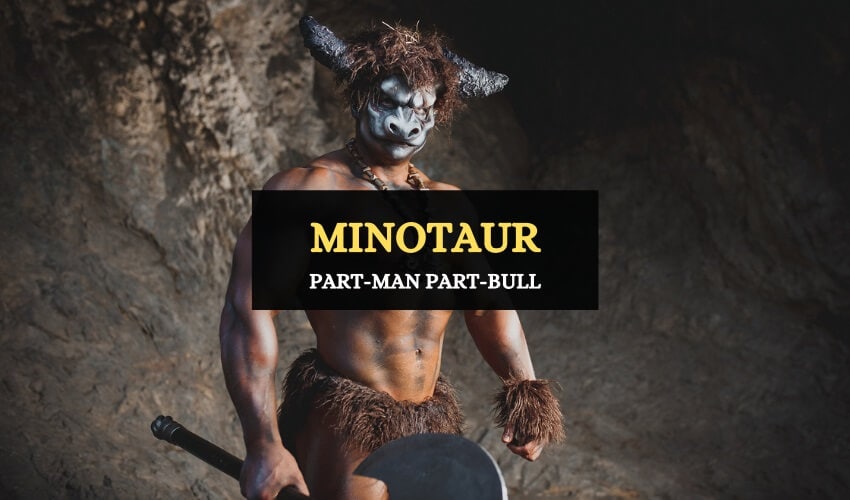
Among the fantastic creatures of Greek mythology, the Minotaur is one of the most famous. This flesh-eating humanoid bull and its labyrinth appear as one of ancient Greece’s foremost myths. Here’s a closer look at the story and symbolism of the Minotaur.
Who Was the Minotaur?
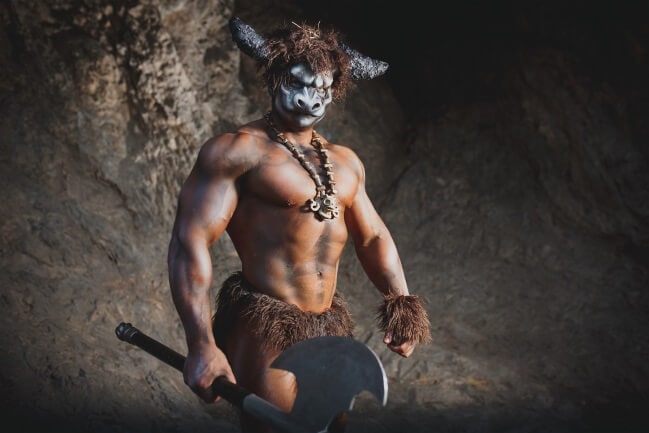
The Minotaur was a half-human half-bull creature who lived in Crete. He was the offspring of queen Pasiphae of Crete and the Cretan bull, and featured a human body with the head and tail of a bull. The monster was born with an uncontrollable desire to eat human flesh, for which it had to be imprisoned.
To contain the beast, King Minos of Crete had the legendary craftsman Daedalus build a labyrinth so elaborate and confusing that nobody could escape from it. He then had the Minotaur imprisoned in the labyrinth where it lived.
The Cretan Bull
According to the myths, when King Asterios of Crete died, one of his stepsons was meant to inherit the throne. It was between Minos and his two brothers, Sarpedon and Rhadamanthus.
To show his worth as future King, Minos bragged about having the favor of the gods, and while offering a sacrifice to Poseidon, he asked the god to send him a bull from the depths of the sea. Minos promised that if Poseidon sent the bull, he would sacrifice it to honor him.
Poseidon obliged, and a marvelous white bull emerged from the sea. Minos was chosen to be king by his people, but as he was amazed by the beauty of the bull, he kept it and sacrificed another one to Poseidon instead. As a result of the king’s audacity, an angry Poseidon cursed Minos’ wife, Pasiphae, and made her physically desire the bull.
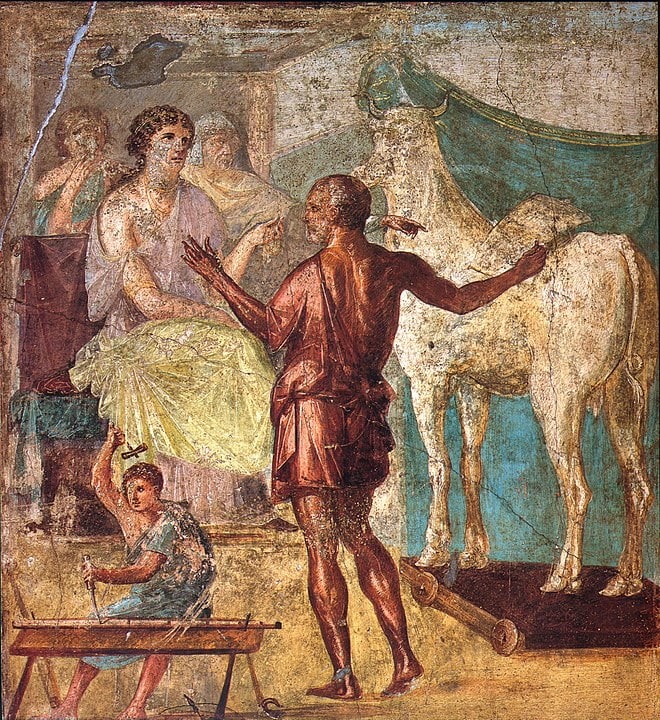
Pasiphae and the Cretan Bull
The Queen of Crete requested Daedalus’ help to create a wooden cow where she could hide to mate with the white bull. Daedalus obliged and Pasiphae was able to couple with the beast. From this union, Pasiphae gave birth to Asterios, who would be later known as the Minotaur. Some myths say that after the birth of the Minotaur, Poseidon passed on the curse to the son of Pasiphae, causing him to have an insatiable appetite for human flesh.
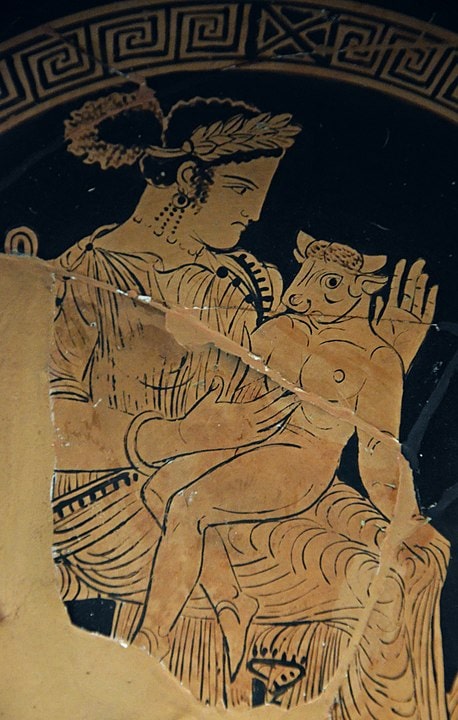
The Labyrinth
When Minos could no longer contain the Minotaur, the King asked Daedalus to build a structure so intricate and complicated that no man could navigate it and from which the Minotaur could not escape.
The Minotaur was imprisoned in the center of the labyrinth, where he remained for the rest of his life. King Minos was reluctant to feed the beast with his people, so to satiate the Minotaur’s need for human flesh, the king received seven young men and seven maidens every year from Athens as a tribute.
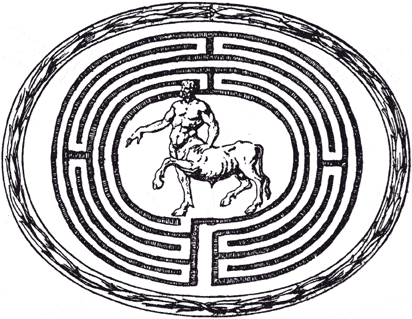
Some myths say that the Athenians offered this sacrifice to King Minos to pay for their killing of Crete’s prince, Androgeus. The oracle of Delphi instructed the Athenians to offer whatever the king of Crete asked to mitigate his loss.
In some accounts, the sacrifices were done yearly, but in others only once every nine years. The youth were sent into the labyrinth unarmed so that the Minotaur could hunt them and satiate his lust for human flesh. The very idea of a labyrinth or maze as we know it nowadays derives from the myth of the Minotaur.
The Death of the Minotaur
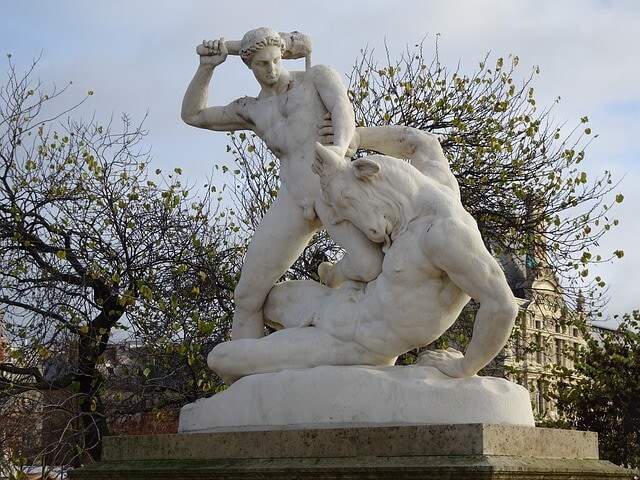
The Athenian hero Theseus was able to kill the Minotaur with a little help. With his father’s blessing, he volunteered to go with the third group of tributes, with the secret plan of killing the beast.
When Theseus arrived at Crete, Minos’ daughter Ariadne fell for him, and unwilling to let him die in the labyrinth, she begged Daedalus to tell her the secret of the structure so that she could help the hero on his quest. Daedalus gave Ariadne a thread and advised that Theseus should tie the thread to the entry of the labyrinth so that he could find his way out after slaying the Minotaur.
Theseus battled the Minotaur in the center of the labyrinth, either with his bare hands or with a club. In the end, Theseus emerged victorious. After having killed the beast, Theseus sailed back to Athens with Ariadne and the young Athenians, unharmed. Crete was freed of the Minotaur and the Athenians no longer had to send in their youth to be sacrificed.
The Symbolism and Influence of the Minotaur
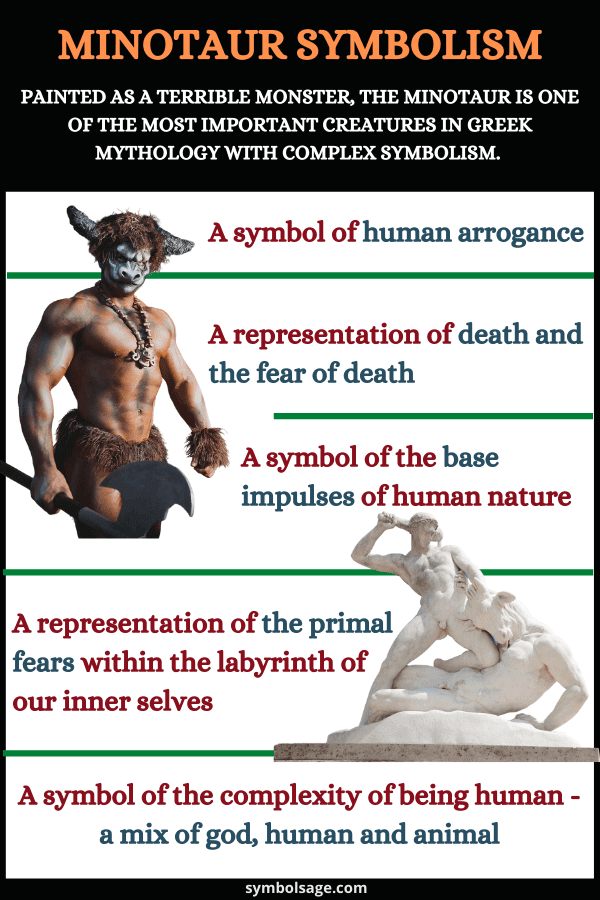
The Minotaur was an important figure in Greek Mythology, not only for his story but also for what he represented.
- The product of arrogance: The Minotaur could only exist because Minos had acted against the gods. Throughout Greek mythology, there are several tales of the sufferings of men after they act against the gods. As such, the Minotaur represents what happens when the gods are insulted and is thus a cautionary tale.
- Base impulses of human nature: The Minotaur also symbolizes the base animal nature inherent within us all. The human half of the Minotaur could not contain the animal desires of his other half. This represents the inner struggle humans often contend with. In the case of the Minotaur, his baser half triumphed, demonstrating that when we let this happen, destruction and death follow.
- Primal fears: The myth of the Minotaur and the labyrinth has influenced psychotherapy. Some therapists refer to the labyrinth as our inner selves, and the Minotaur as the fears and thoughts we need to discover by casting a look inside. In this respect, everyone has a Minotaur lurking within their labyrinthine subconscious.
- Human nature: The Minotaur is often taken as a symbol of human nature – a mix of human, animal and god. It’s the result of a coinciding of all these three aspects – Pasiphae, Poseidon and the Bull.
- Death and the fear of the unknown: The Minotaur is sometimes seen as a symbol of death and also of the fear of death, which is common fear.
A Monster or a Victim?
The Minotaur is often depicted as a terrible monster that needed to be killed for its hideous ways. However, just like Medusa, the Minotaur too was an unfortunate victim of fate and injustice.
By no fault of its own, the Minotaur was born in an unnatural way. It wasn’t shown any love or assistance in dealing with its impulses and instead was locked away in a terrible maze and only fed every so often. There was no hope or future for the Minotaur, and it was destined to spend the rest of its life in this miserable manner. Little wonder, then, that all it knew was to kill and terrorize.
It’s true that Minos did all he could to contain the creature, but one can’t help but feel that the Minotaur didn’t stand a chance.
The Minotaur Outside Greek Mythology
The Minotaur plays a minor role in Dante’s Inferno, in which he is found among men who are in hell for the violent actions.
Picasso created several depictions of the Minotaur throughout his life. However, these depictions could also be inspired by Spanish bullfighting.
In modern pop culture, some people have found connections between the myth of the Minotaur and Stephen King’s book The Shining. The Minotaur and the Labyrinth also star in an episode of the awarded series Doctor Who.
In Brief
In Greek mythology, the myth of the Minotaur had great importance due to its associations with the island of Crete, and with Theseus and Daedalus. However, the story of the beast goes beyond this. The Minotaur is among the most symbolic figures of Greek mythology and continues to resonate today.








